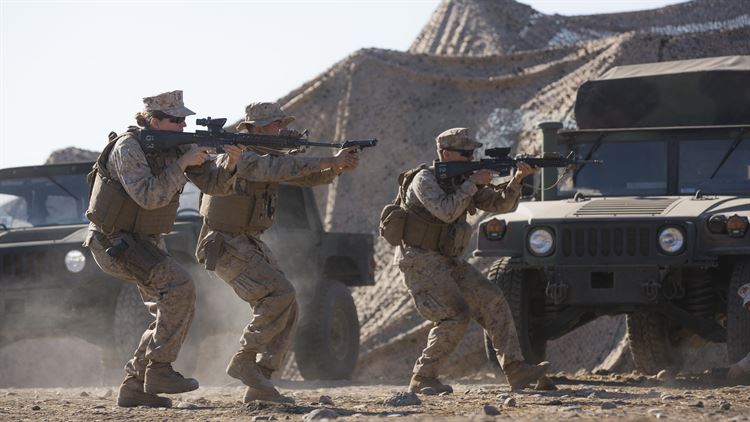
Senior armed forces delegate from the International Committee of the Red Cross visited the Marines and sailors of I Marine Expeditionary Force, Aug. 16, as they conducted I MEF Large Scale Exercise 2016, at Marine Corps Air Station Miramar, California.
Martin Lacourt, from the Regional Delegation for the United States and Canada in Washington, D.C, discussed interagency coordination with senior members of the I MEF staff. The force conducted a massive, simulated, and live-action exercise involving more than 50, 000 military members at multiple Marine Corps installations throughout Southern California.
The exercise was designed to enhance command and control and interoperability between I MEF command element staff and its higher, adjacent and subordinate command headquarters.
According to the ICRC’s mission statement the non-governmental organization was established in 1863. It is headquartered in Geneva and operates as an impartial, neutral and independent organization whose exclusively humanitarian mission is to protect the lives and dignity of victims of armed conflict and other situations of violence and to provide them with assistance.
“They reached out to us and wanted to participate in our exercise to deepen the relationship between the ICRC and high-levels of U.S. military commands and to educate the military staff on the roles of the ICRC in armed conflicts,” said Col. Amber Lehning, who oversees civil-military operations for I MEF.
Lacourt said the purpose of his visit was twofold: “With the U.S. military, we have two main topics of discussion. The easiest one is the topic of coordination … to tell you where we work (and) to avoid any situation where we are in the middle of the battle that you are planning.”
He added that when the organization is in a combat zone where the U.S. military is operating, they coordinate all land, air and sea movements to not be in the wrong place at the wrong time.
“The other topic of discussion is detention and conduct of facilities,” he continued. “So we are also there to remind the U.S. military of their obligation. If you go back to why I’m here today, it’s in fact to inject on the exercise those discussions we have in real life, just to prepare a good relationship.”
Lehning said the discussions were “fruitful and beneficial to both parties,” referring to ICRC and I MEF Civil Affairs Detachment, which acts as a liaison between military and civilian authorities and international organizations like the ICRC.
“It’s always good for the staff outside (civil-military operations) to interact with real-world members of the international community,” she said.
The scenario that LSE-16 simulates is the planning, deployment and combat operations of a MEF-level force within a partner country while operating alongside coalition forces. The ICRC would be heavily involved with relief efforts during such combat operations.
According to Lacourt, the organization has a long history of lending a helping hand to military casualties and other victims of armed conflict, and can trace its creation back to a Swiss businessman who was strongly impacted by the Franco-Austrian War.
“So that also explains why the ICRC has in its DNA this will to outreach to combatants, to soldiers, to military … but also the non-state actors that exist now today on the battlefield,” Lacourt said.